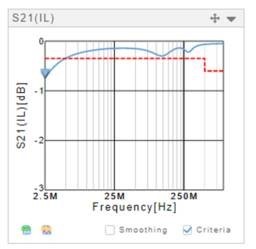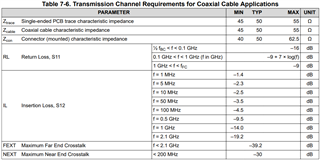Hi team,
My customer use our 960 and have a question:
The below picture is their POC design insertion loss simulation and they found the IL value drops below -0.35dB when frequency <5MHz. This doesn't meet suggested characteristics in datasheet. Is there any risk and is it acceptable?
Thanks!
Thanks!



